“Cashew Fruit: Unveiling Nature’s Hidden Gem – Taste, Health, and Global Cultivation.”
When we think of cashews, our minds often conjure images of the kidney-shaped nuts we love to snack on. However, there’s a hidden treasure within the cashew tree that’s equally remarkable – the cashew fruit, or a cashew apple. This humble, lesser-known fruit is not only delicious but also packed with health benefits, making it a true hidden gem of nature.
The Cashew Fruit
The cashew fruit is native to tropical regions like Central and South America, where it thrives in warm and humid climates. It’s often called a “cashew apple” because of its appearance – it resembles a small, pear-shaped fruit with reddish or yellow skin.
Table of Contents
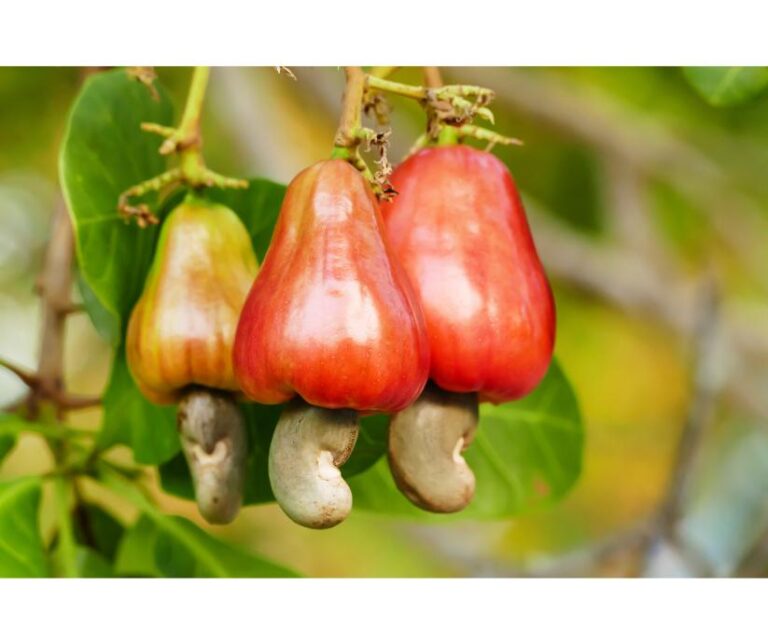
Health Benefits of Cashew Fruit
- Rich in Vitamins: Cashew apples are a good source of vitamin C, which is essential for a healthy immune system and glowing skin.
- High Fiber Content: The fruit is rich in dietary fiber, promoting healthy digestion and aiding in weight management.
- Antioxidant Properties: It contains antioxidants like carotenoids, which help combat free radicals in the body.
- Diabetes-Friendly: Despite its sweetness, cashew apples have a low glycemic index, making them a suitable option for those with diabetes when consumed in moderation.
Nutritional Value and Chart
Here’s a nutritional breakdown of the cashew fruit per 100 grams:
- Calories: 43
- Carbohydrates: 10.6 grams
- Dietary Fiber: 1 gram
- Vitamin C: 7-10% of the recommended daily intake
- Protein: 0.5 grams
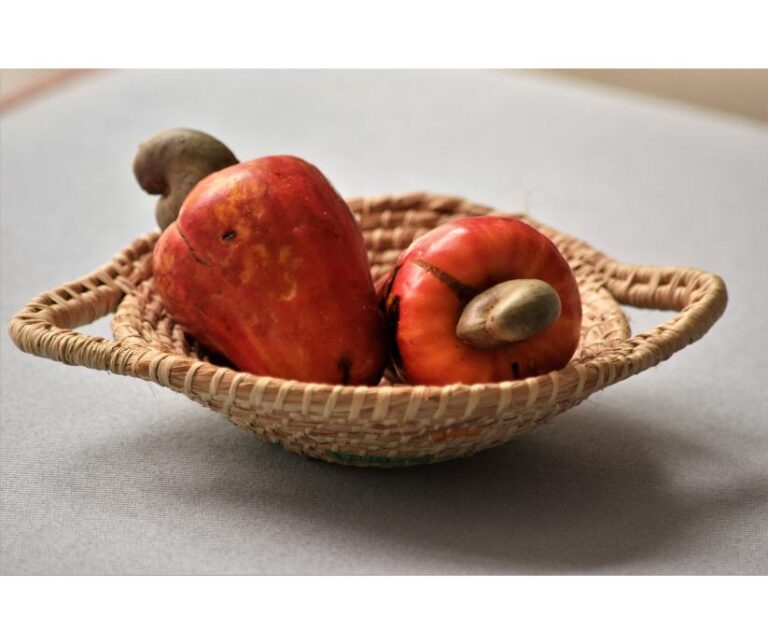
Taste and Culinary Uses
The cashew apple boasts a unique taste that can be described as a blend of sweet, tangy, and slightly astringent flavors. Its juicy, succulent flesh is both refreshing and satisfying on a hot day. Many enjoy eating it fresh, but it can also be used in various culinary applications. In some regions, it’s used to make jams, beverages, and even wines. The fruit’s sweet-tart flavor adds a delightful twist to recipes.
Culinary Versatility of Cashew Fruit
One of the most intriguing aspects of the cashew fruit is its unusual nut-to-fruit ratio. Unlike many other fruits, where you might expect to find multiple seeds or nuts inside, the cashew fruit typically yields only one cashew nut per fruit. This single nut is attached to the bottom of the fruit, nestled within a tough, protective shell. It’s this shell that poses a challenge in harvesting and processing cashew nuts, adding to their overall cost.

Names of Cashew Fruit
In Central America, the cashew apple goes by various names. In Brazil, it’s called “caju,” and it’s used in a famous drink called “caipifruta.” In Guatemala, it’s known as “maranon” or “marañón,” and it’s often enjoyed fresh or made into preserves.
Unique Facts About Cashew Fruit
- Perishable Nature: Cashew apple’s are extremely perishable. Once ripe, they have a limited shelf life, usually only a few days to a week. This perishable quality has led to a focus on local consumption and limited export of fresh cashew fruits.
- Variety of Colors: Cashew apples come in different colors, including red, yellow, and green. The color is indicative of the fruit’s ripeness, with red being the ripest and sweetest.
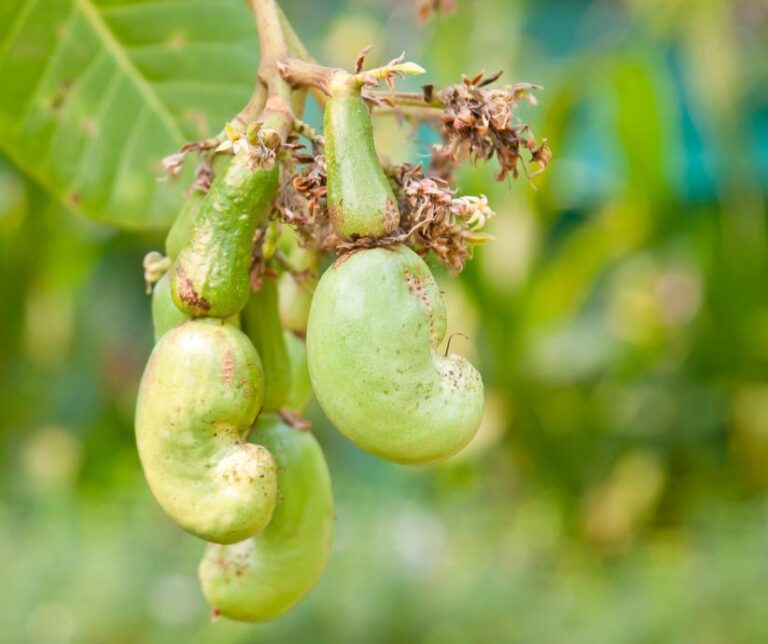
Cashew Fruit Varieties
While the most common cashew fruit is the recognizable pear-shaped variety with red or yellow skin, there’s a whole world of cashew fruit diversity to explore:
- Green Cashew Apple: Harvested before ripening, the green cashew apple boasts a uniquely tart flavor. It’s a favorite in savory dishes, pickles, and zesty salads, adding a delightful tang.
- Wild Cashew: Nature offers its own twist with wild cashew trees (Anacardium excelsum). They produce smaller, elongated fruits with distinct flavors. Indigenous communities in Central and South America have long cherished these wild cashews.
- Diverse Shapes and Sizes: This fruit is anything but uniform. Depending on the variety and growing conditions, they can range from round to oblong, and even take on irregular shapes.
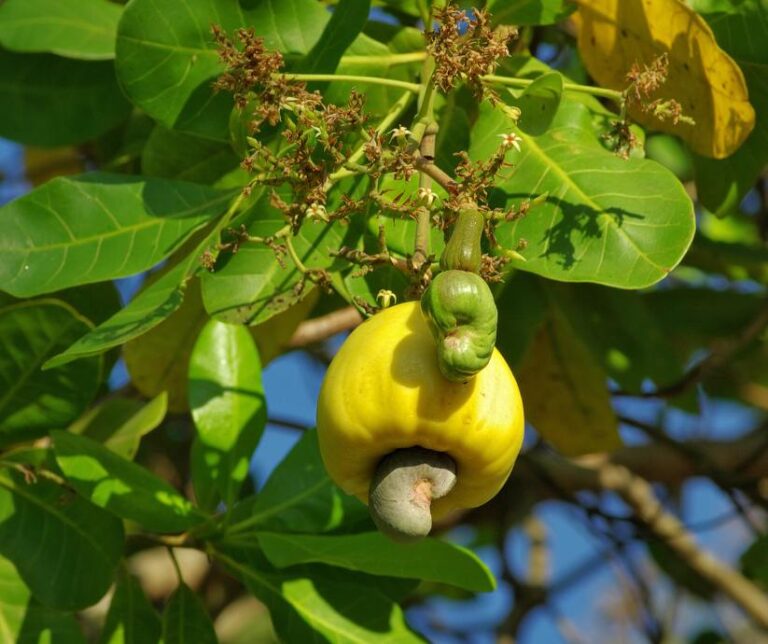
Cashew Fruit in Culture
Cashew fruit weaves a rich cultural tapestry in regions where it thrives:
- Traditional Healing: In some cultures, the cashew tree is a natural pharmacy. Various parts, including the fruit, are used in traditional medicine to treat ailments such as diarrhea, stomachaches, and even snakebites.
- Festivals and Joyous Celebrations: Across parts of Brazil and other cashew-growing regions, the cashew harvest is celebrated with vibrant festivals. These events are a delightful fusion of music, dance, and an abundance of cashew fruit-infused culinary creations.
- Cashew Artistry: Cashew fruit’s allure extends to art and folklore, with its vibrant presence in paintings, sculptures, and traditional songs reflecting its cultural importance.

Sustainability and Economic Impact
Cashew fruit cultivation isn’t just fruitful for farmers; it’s a boon for the environment and economies:
- Sustainable Farming: Cashew trees play an essential role in agroforestry systems. They help prevent soil erosion and provide valuable shade for other crops, contributing to sustainable farming practices.
- Economic Empowerment: Small-scale farmers in developing countries find economic empowerment through cashew farming. The sale of cashew nuts and cashew apples significantly bolsters their livelihoods.
- Thriving Processing Industry: The cashew processing industry creates employment opportunities. From nut processing units to exporting cashew nuts, it’s a key driver of revenue for many nations.

Certainly, let’s expand on the cultivation requirements and ideal environmental conditions for cashew fruit:
Ideal Cultivation Conditions for Cashew Fruit
Cashew fruit, is a tropical wonder that thrives under specific environmental conditions. If you’re considering cashew cultivation, understanding the ideal requirements is crucial for a successful harvest.
Climate
Rainfall
Cashew trees have a resilient nature, but they do have one non-negotiable demand – water. While they can endure short dry spells, they truly thrive in regions with an annual rainfall ranging from 1000 to 2500 millimeters. This balance of moisture is crucial, especially during the growth season.

Soil
The foundation of successful cashew cultivation lies in well-drained soils. Sandy or sandy loam soils work best, ensuring water doesn’t linger and lead to root rot. Checking and adjusting the soil’s pH, aiming for a slightly acidic to neutral range (pH 5.5 to 7.0), is essential for optimal growth.
Altitude
Cashew trees tend to call low to mid-altitude locations their home. While they can adapt to some altitude variation, they yield their best results closer to sea level, below 600 meters (2000 feet).
Sunlight
Cashew trees are sun worshippers, needing their daily dose of sunshine. When selecting a location for planting, ensure it receives at least 6-8 hours of direct sunlight each day. This sunlight fuels the photosynthesis process, helping the tree produce those delightful fruit and nuts.
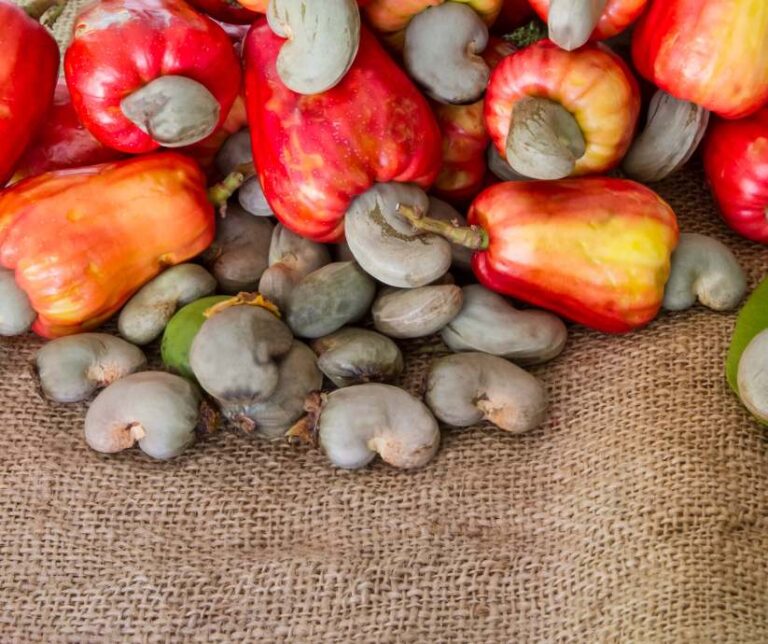
Global Cashew Cultivation:
Cashew cultivation is a global endeavor, with several countries excelling in production:
- India: India is a cashew powerhouse, with states like Kerala, Karnataka, Goa, and Maharashtra contributing significantly to its production.
- Africa: Several African nations, including Ivory Coast, Nigeria, Tanzania, Mozambique, and Ghana, are prominent cashew producers. The continent’s climate and soil conditions create fertile ground for these trees to thrive.
- Southeast Asia: Countries like Vietnam and Indonesia have also joined the ranks of major cashew producers. Vietnam, in particular, has risen as a dominant player in the cashew export market.
- South America: In Brazil, cashew fruit is known as “Caju.” The northeastern regions of Brazil are known for their cashew orchards.
- Pakistan: Cashew cultivation in Pakistan is gaining ground, with regions like Sindh and Balochistan showing promise due to their favorable climates and well-drained soils.
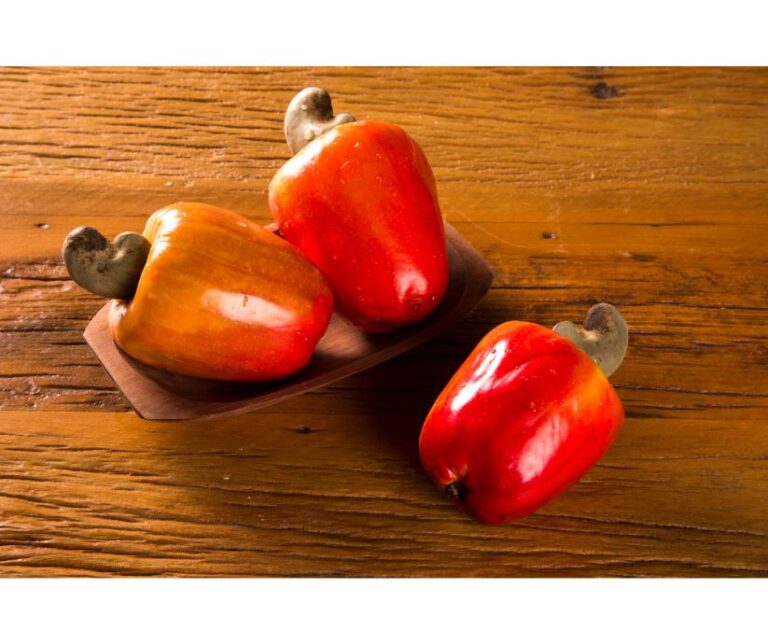
Fascinating Facts: Uncovering Nature's Secrets
Here are some intriguing tidbits about cashew fruit:
- The Urushiol Mystery: The cashew nut’s shell harbors a tricky secret – urushiol, a toxic resin that can cause skin irritation and allergies. To enjoy cashew nuts safely, proper processing is paramount.
- Cashew Apple’s Secret Potion: In select regions, they are alchemized into wine, which can pack a surprising punch with its alcohol content.
- The Uniquely Curved Nut: The cashew nut’s iconic shape, curved and flattened, makes it stand out amongst the nut crowd.
- Seeds for Future Trees: Inside this there are a few small, inedible seeds. These seeds hold the potential for future cashew trees and fresh harvests.
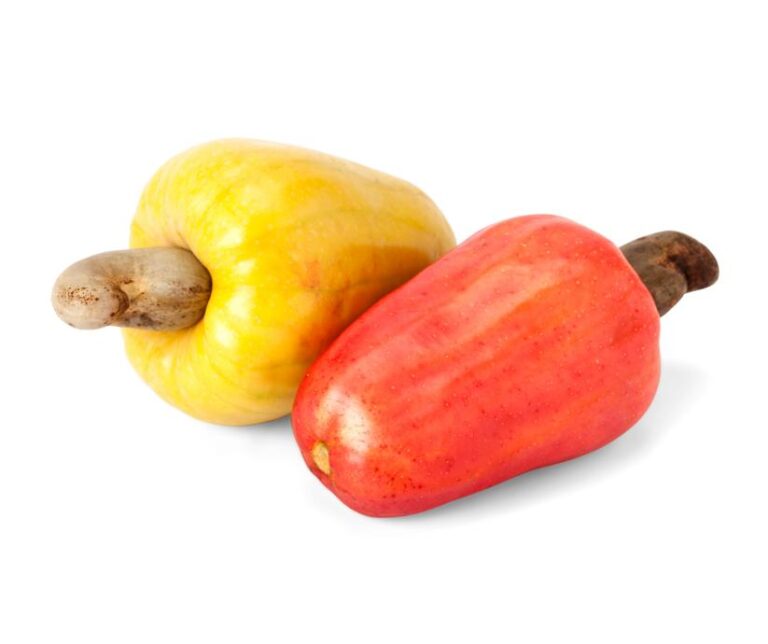
The Cashew Fruit Journey
From its enchanting blossoms to its many culinary possibilities and cultural significance, the cashew fruit takes us on a fascinating journey. It’s a testament to nature’s creativity and resilience, showcasing how a single tree can offer a bounty of delights, from refreshing juices to flavorful preserves and even a glass of unique cashew apple wine.
Challenges and Opportunities:
While cashew trees are robust, they face their share of challenges, such as pests and diseases like cashew anthracnose and cashew nut weevils. Effective pest and disease management practices are essential to protect these valuable orchards and ensure healthy yields.
Verdict
In conclusion, the cashew fruit is far more than just a delightful and nutritious part of the natural world. It symbolizes culture, sustainability, and economic vitality in numerous corners of our planet. Its ability to adapt and its diverse culinary applications render it a gem worthy of greater recognition.
From its captivating blossoms to its various culinary transformations and cultural significance, the cashew fruit is a testament to nature’s ingenuity. It embodies the abundance of flavor, versatility, and beauty within the realm of fruits, offering a multitude of delights to savor and celebrate.


1 thought on “Cashew Fruit #1 Nature’s Hidden Gem for Health and Culinary Delights ”